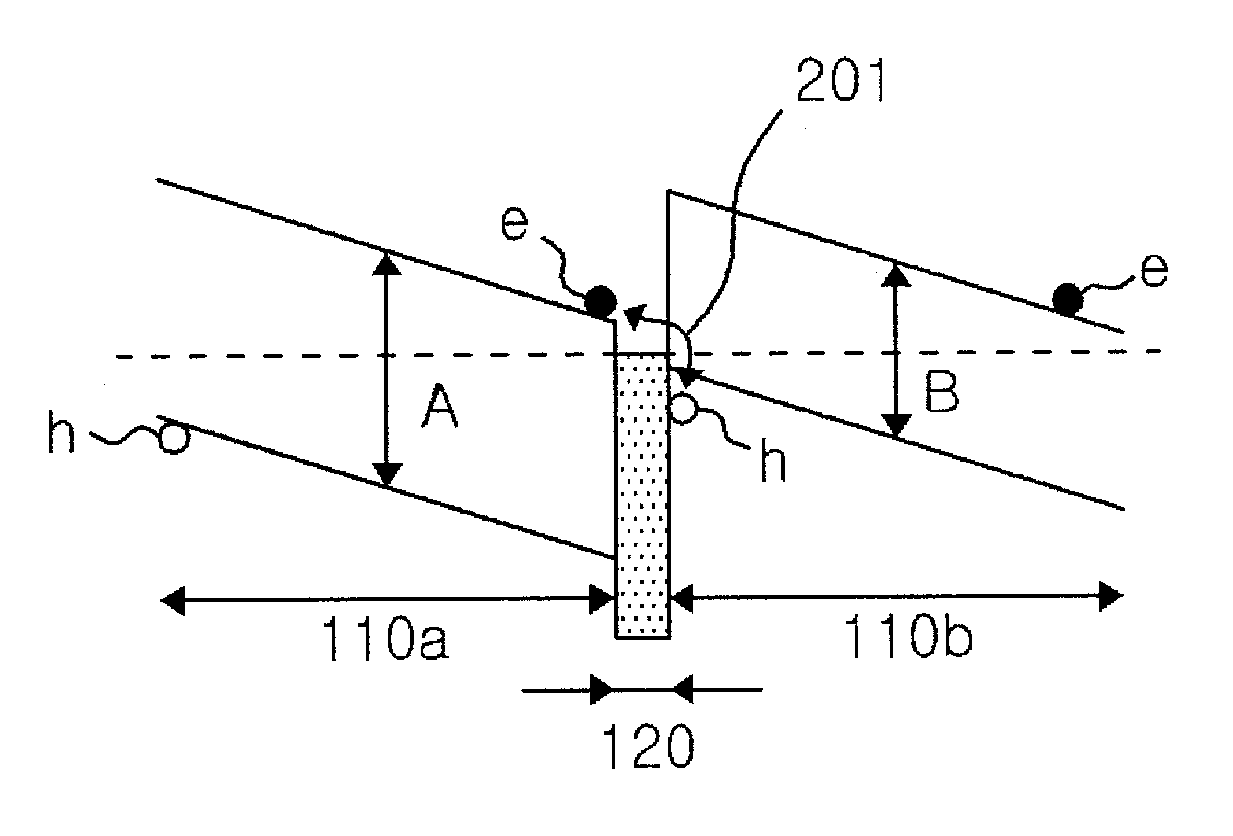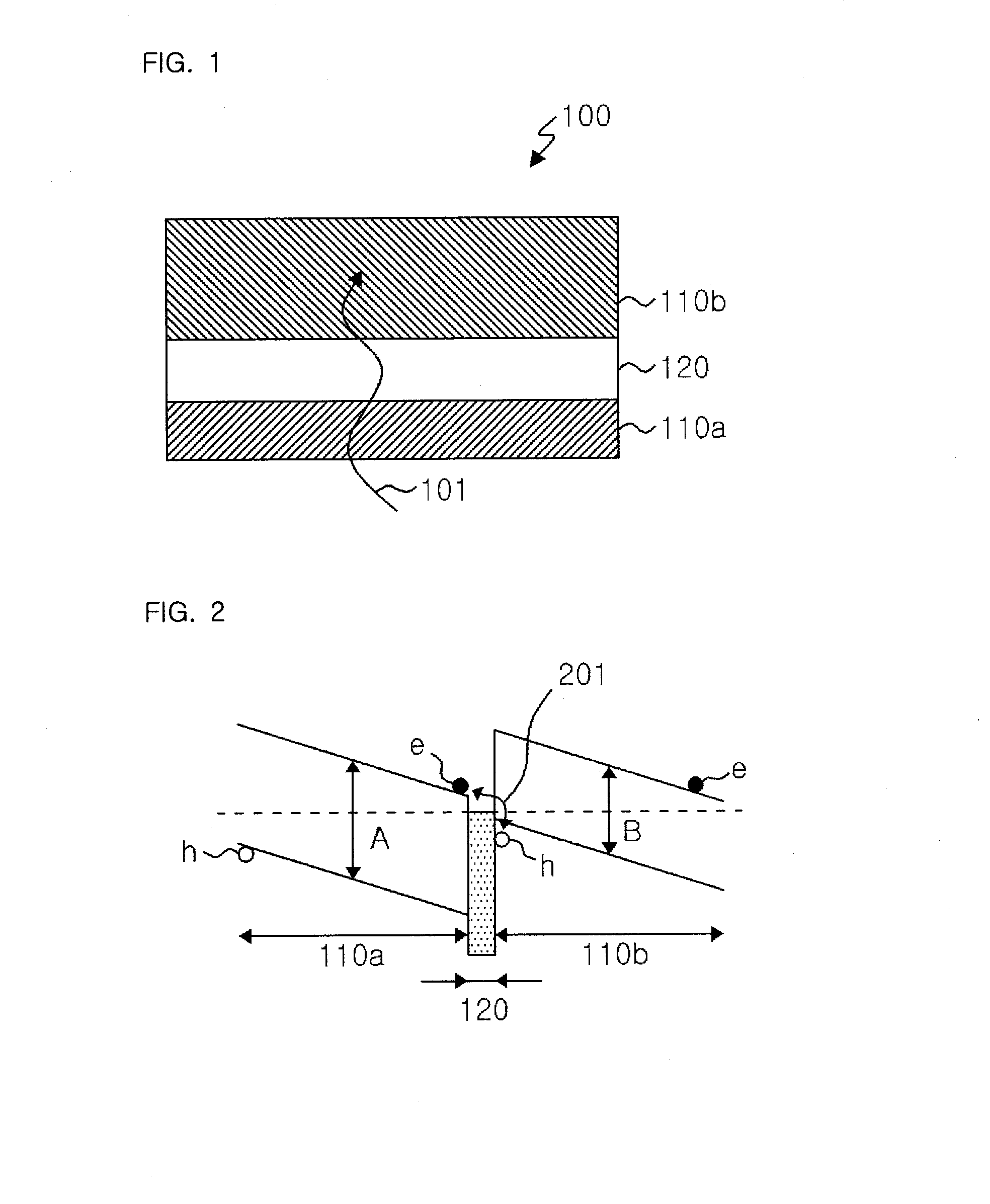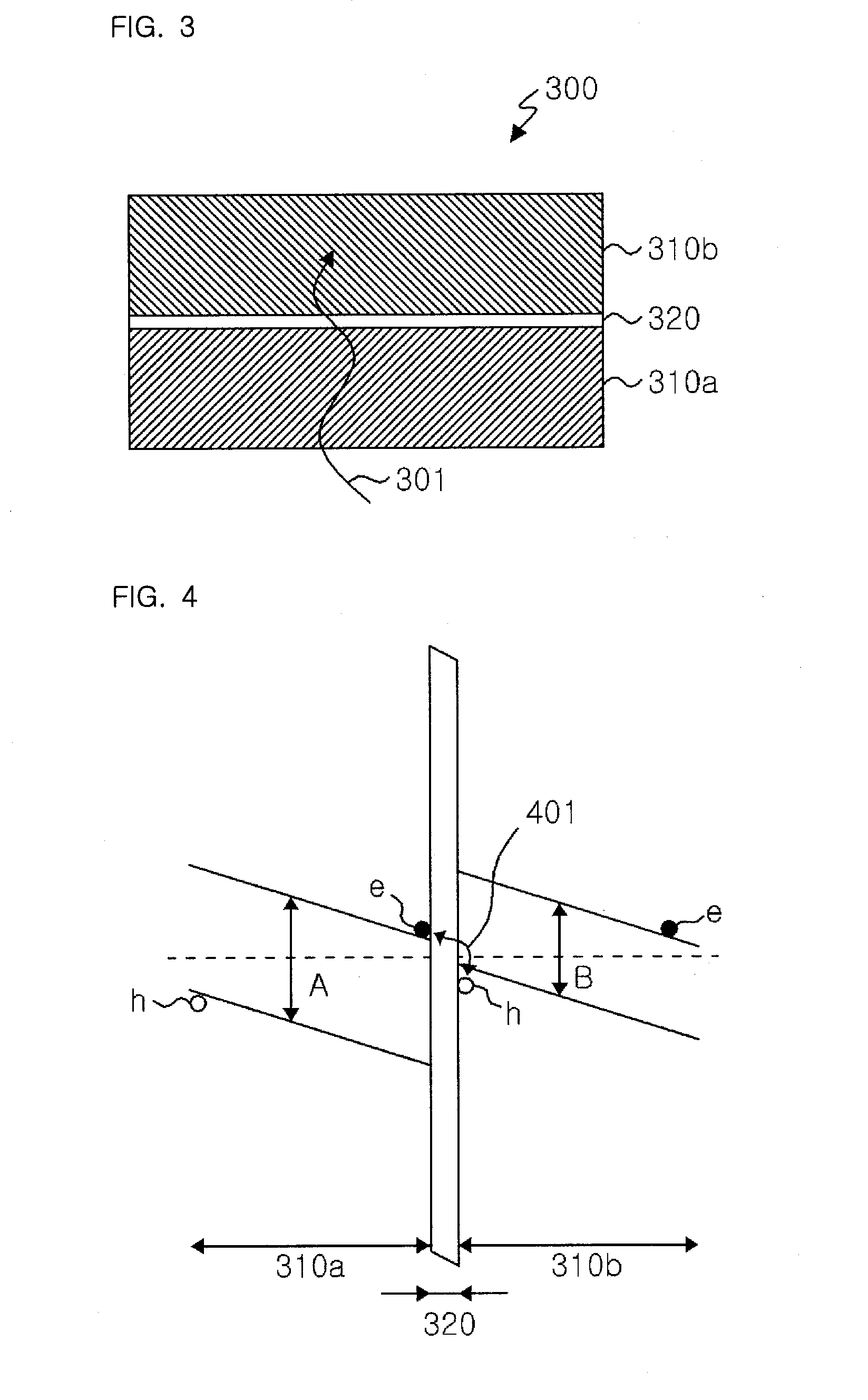Crystalline solar cell having stacked structure and method of manufacturing the crystalline solar cell
a solar cell and crystalline technology, applied in the field of solar cells, can solve the problems of reducing electricity generation efficiency, recombination rate, and affecting the efficiency of solar energy generation, and achieve the effect of increasing light absorption efficiency
- Summary
- Abstract
- Description
- Claims
- Application Information
AI Technical Summary
Benefits of technology
Problems solved by technology
Method used
Image
Examples
Embodiment Construction
[0023]Hereinafter, exemplary embodiments of the present invention will be described in detail with reference to the attached drawings.
[0024]FIG. 3 illustrates a crystalline solar cell having a stacked structure according to an embodiment of the present invention. The crystalline solar cell 300 having a stacked structure illustrated in FIG. 3 includes a first solar cell layer 310a, a second solar cell layer 310b, and a non-conductive lattice buffer layer 320.
[0025]The crystalline first solar cell layer 310a is formed at a front surface in a direction 301 of incident light, and the crystalline second solar cell layer 310b is formed at a rear surface in the direction 301 of incident light. The non-conductive lattice buffer layer 320 is made of a non-conductive material and formed between the first and second solar cell layers 310a and 310b.
[0026]The first solar cell layer 310a first absorbs the incident light and may have a wide energy band of a relatively wider band gap A, and the se...
PUM
 Login to View More
Login to View More Abstract
Description
Claims
Application Information
 Login to View More
Login to View More - R&D
- Intellectual Property
- Life Sciences
- Materials
- Tech Scout
- Unparalleled Data Quality
- Higher Quality Content
- 60% Fewer Hallucinations
Browse by: Latest US Patents, China's latest patents, Technical Efficacy Thesaurus, Application Domain, Technology Topic, Popular Technical Reports.
© 2025 PatSnap. All rights reserved.Legal|Privacy policy|Modern Slavery Act Transparency Statement|Sitemap|About US| Contact US: help@patsnap.com



